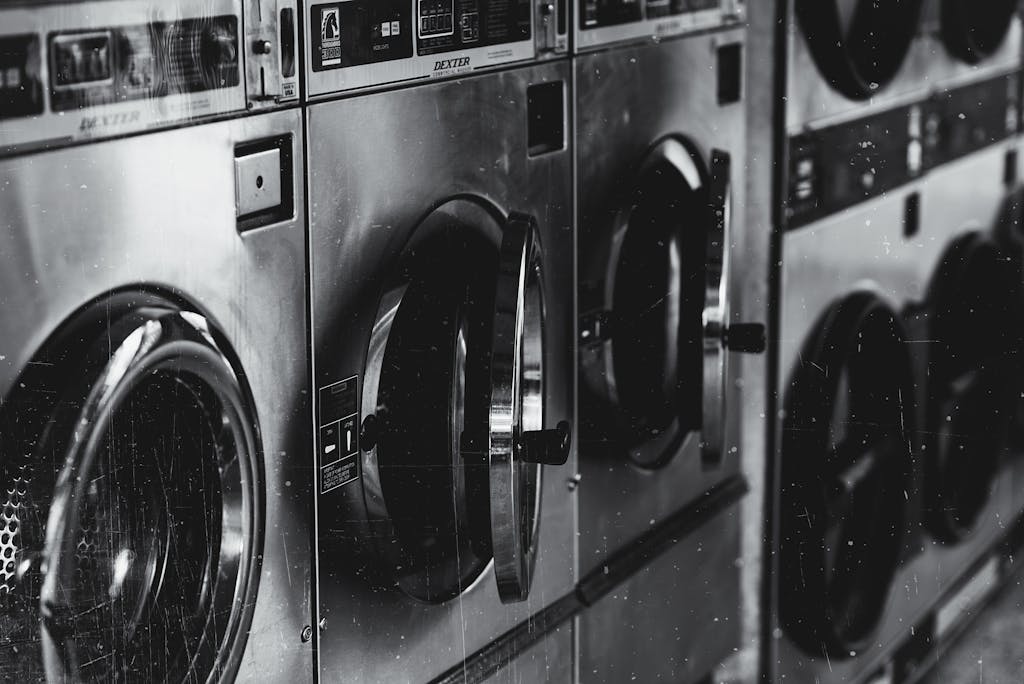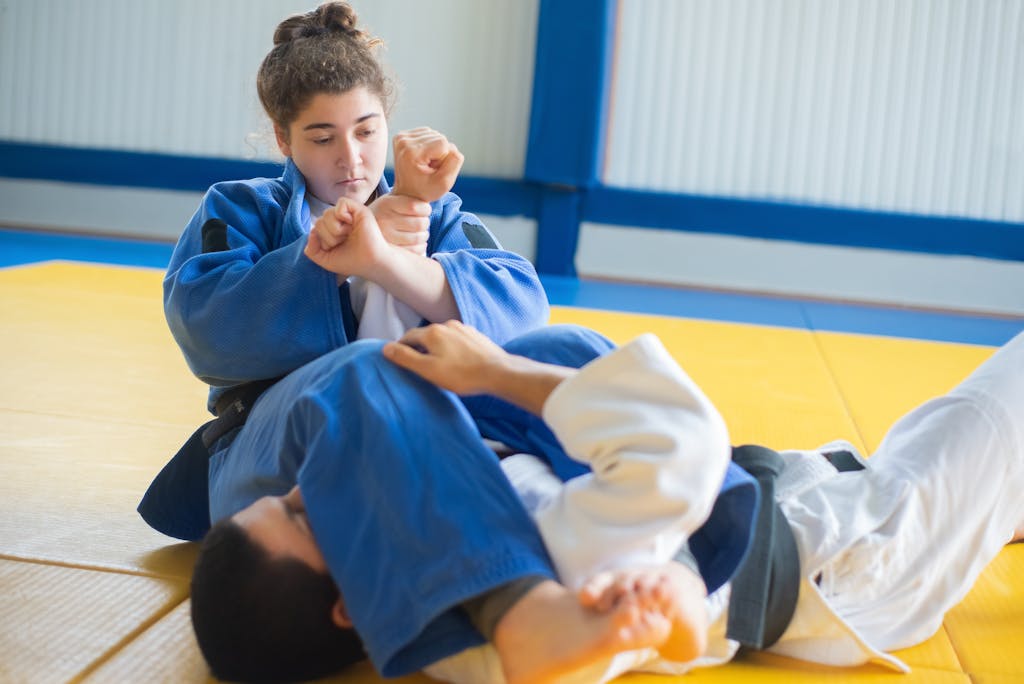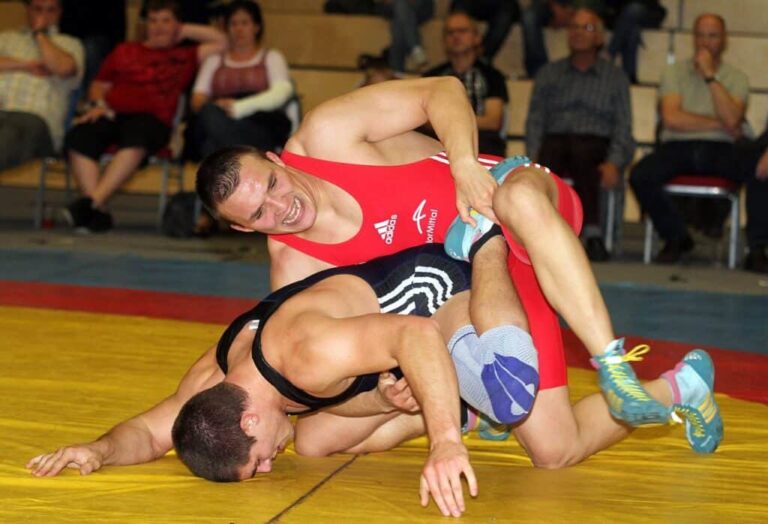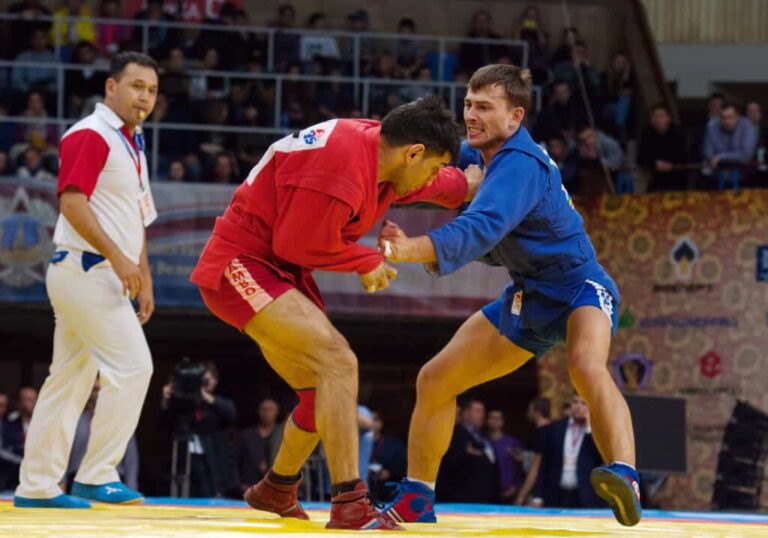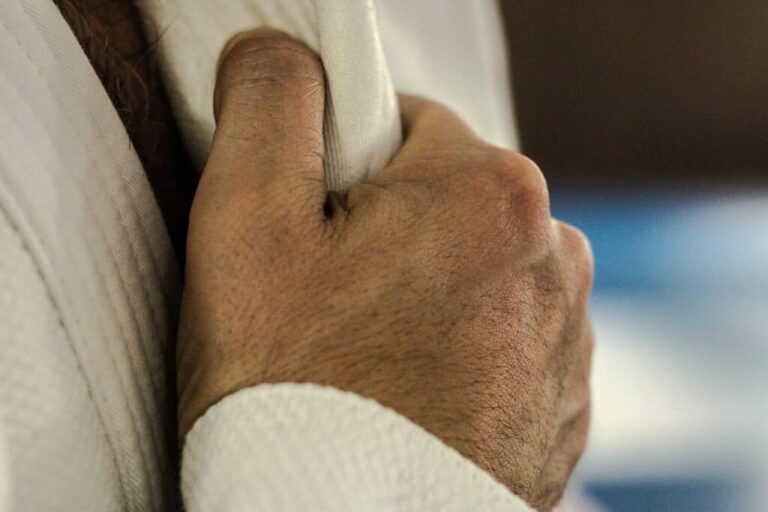Shuai Jiao vs. Judo | The Differences Between Judo and Shuai Jiao
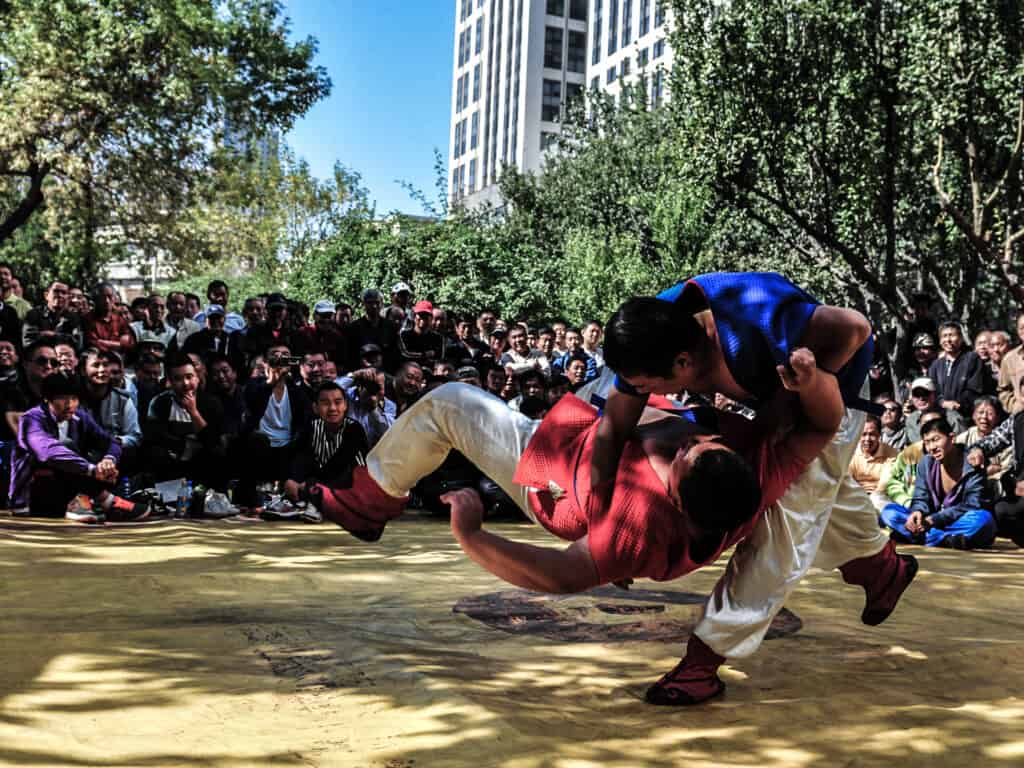
At first glance, Shuai Jiao looks very similar to the more well-known martial art known as judo. Those exploring new martial arts styles could quickly find themselves wondering, “What is the difference between Shuai Jiao and judo?”
Shuai Jiao is a Chinese martial art and is often called Chinese Wrestling due to its unique focus on grappling techniques that looks similar to judo. Judo is a Japanese martial arts style that focuses on overpowering and controlling the opponent via takedowns and grappling techniques.
Judo and Shuai Jiao look very similar. The differences between Shuai Jiao and judo come down to their history, uniform, and ruleset.
Learning more about these grappling styles could help you choose an option that fits your needs and preferences. It can also help you better understand other styles and techniques with greater clarity, allowing you to improve your strategies and overall performance.
What Is Shuai Jiao and How Is It Different Than Judo?
Shuai Jiao is occasionally referred to as the first Chinese martial art. According to Professor Christopher Muscato, Chinese legend purports that Kung Fu martial arts have been around since the days of the semi-mythological figure, the Yellow Emperor (Shi Huangdi).
Because Shuai Jiao is one of the hundreds of Kung Fu styles, some may argue that it’s been around for thousands of years. However, it’s more likely that Shuai Jiao developed over time, eventually gaining recognition for its unique flow and style.
Shuai Jiao Is a Grappling Style From China
Shuai Jiao (often called Chinese Wrestling) is a martial art style from the Hubei Province in China. Many consider this fighting style to be the only type of wrestling to come from China.
Like other types of Chinese martial arts, Shuai Jiao is considered a type of Kung Fu. It is primarily practiced in Beijing, Baoding, and Tianjin, though there are chapters worldwide, including New York City.
Shuai Jiao Military History
Shuai Jiao also has military influences and applications. In fact, until the mid-2010s, members of the Chinese military were still required to learn and practice this martial art form. You can spot these influences when watching a match.
But Shuai Jiao is far less concerned with control and is more focused on speed than judo is. Overpowering and destabilizing the opponent is far more important than taking them down.
Judo on the other hand places a huge emphasis on controlling their opponent and taking them to the ground for a pin or quick submission.
Shuai Jiao Vs Judo Uniforms
Some wrestlers may compare Shuai Jiao to folk wrestling, primarily because of the emphasis on grappling. However, there are several notable differences between this fighting style and folkstyle wrestling.
Unlike folkstyle wrestling, Shuai Jiao allows fighters to grab onto one another’s clothing for leverage. This technique will enable participants to perform belt grabs with ease and use their opponent’s jacket against them to perform takedowns.
However, fighters will find themselves penalized or disqualified for grabbing their opponent by the pants. Unlike judo, individuals who practice Shuai Jiao don’t wear long-sleeved gi tops. Instead, they wear a distinct short-sleeved, tunic-like top.
So much like judo, Shuai Jiao allows the use of the uniform for takedowns. However, the major difference between Shuai Jiao vs. judo is that the judogi has long sleeves and is made of thicker material. So though some takedowns might be similar they will require different grips.
While short sleeves can be freeing, allowing for faster arm movements, they offer slightly less fabric to grab onto. Still, Shuai Jiao does allow for shirt grabs, which is a notable departure from many other forms of wrestling.
Judo Vs Shuai Jiao Ruleset
The points system used in Shuai Jiao is remarkably different from the standard points system used in judo or wrestling matches. The only body part allowed to touch the floor during Shuai Jiao is your feet.
If the challenger manages to get their opponent on their knees, they will score points. If a hand touches the floor, that’s more points. Essentially, this system changes the goal of the sport.
Unlike freestyle wrestling, where many points are given for takedowns and extended holds, Shuai Jiao rewards athletes for simply destabilizing the opponent. Of course, throws and takedowns garner more points, making them desirable moves. Whereas in judo throws are the main focus.
In judo, there is also more emphasis on control of your opponent. After all, if you pin or submit your opponent in judo the match is over.
How Judo Is Different Than Shuai Jiao
Unlike Shuai Jiao, the judo martial art style doesn’t originate in China. Instead, it’s a modified form of jiu-jitsu (often called Japanese wrestling) that Kano Jigoro Shihan founded in the late 1800s.
Originally, judo was intended to be a slightly more restrictive form of jiu-jitsu. It placed far more focus on self-awareness and control than on aggressive tactics. To defeat the opponent was not enough—One must also maintain composure and adhere to the rules at all times.
This slower-paced form of wrestling emphasizes extended holds and powerful takedowns rather than quick moves and fast hands. Unlike other fighting styles, judo allowed challengers to incorporate their legs when attempting a takedown when it was founded.
Today you are still allowed to use legs for tripping but grabbing the legs for a takedown is no longer allowed. The reasoning is controversial with many claiming that they removed these takedowns due to the success judokas who also practiced freestyle wrestling were having over other judokas.
Judo Is A Japanese Martial Art
The creation of judo is easily traceable. That’s because there’s a paper trail attached to it!
The founder of modern judo, Kano Jigoro Shihan, opened the first judo academy (the Kodokan Judo Institute) in 1882. The style was unabashedly copied from existing jiu-jitsu practices but with a handful of small philosophical and technical changes.
However, it soon proved popular among local students. Less than a century later, judo became an official Olympic sport, helping to heighten its international popularity.
Judo Is All About Control
Shuai Jiao is about speed and movement, while judo is more about off-balancing and control.
The primary focus of every judo match is to earn points through well-thought-out maneuvers and moves. In some ways, practicing judo is similar to practicing chess. Each fighter must be fully aware of their strengths and weaknesses, and then use those aspects to their advantage.
Another aspect to keep in mind is adherence to the rules. A fighter can celebrate an early and easy win (though not an honorable one) by allowing their opponent to break the rules.
The goal of judo is to control your opponent and score a winning ippon throw, earning points, pinning your opponent, or executing a judo submission.
Leg Grabs Where Allowed ( When Judo Started )
Though opponents are not allowed to kick or injure their challenger’s legs, leg grabs were once permitted during judo matches. This additional method of disarming an opponent can be a helpful move for fighters struggling to gain the upper hand using only their arms and shoulders.
In this way, judo matches had some similarities to freestyle wrestling matches. Additionally, both judo and freestyle wrestling are Olympic sports. But their popularity belies their inherent challenges.
After all, it’s easy enough to score points against an opponent when the only body parts allowed to touch the floor are the feet. But when your primary pathway toward a win involves technically proficient body throws and takedowns, the stakes are raised.
It’s Challenging to Earn Points
The points system used in judo is uniquely focused on skillfulness and honor. Participants do not earn points for causing their opponent to stumble or take a quick knee. To earn a point (or ippon), you’ll need a legit takedown or throw.
Martial artists who practice judo want to throw their opponent onto their back, submit, pin their opponent for at least 20 seconds, or simply outlast the challenger to earn points. Consequently, judo can be one of the most physically challenging martial arts.
Conclusion
The primary differences between Shuai Jiao are their origins, focal points, allowed techniques, and point systems. The other major difference between Shuai Jiao and judo is the attire. Shuai Jiao uses a wrestling jacket whereas judo uses the judogi. This naturally causes them to use different takedowns.
Shuai Jiao is a Chinese martial art focused on fast grappling movements, including belt and shirt grabs. Simple mistakes like touching the ground with a hand or knee can result in points for the challenger.
Judo is a Japanese martial art with a focus on self-control and opponent takedowns. Fighters can pin their opponent or submit them.
